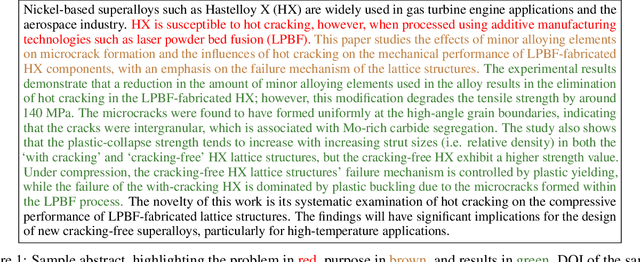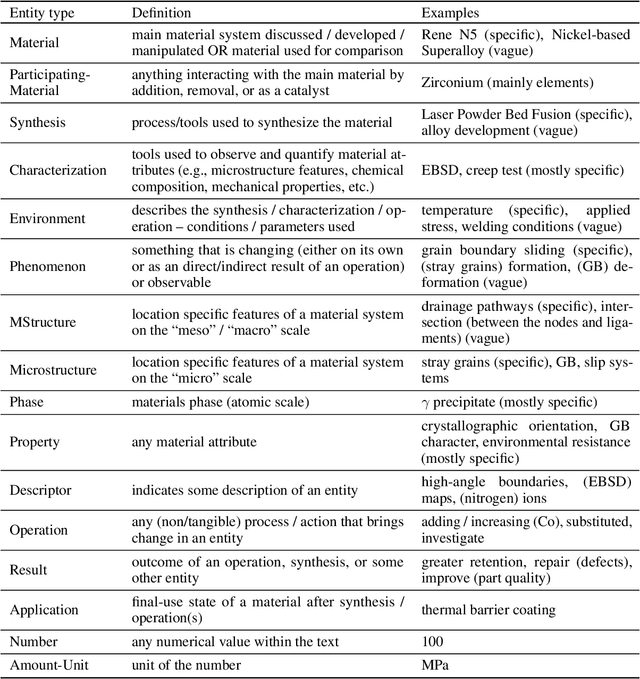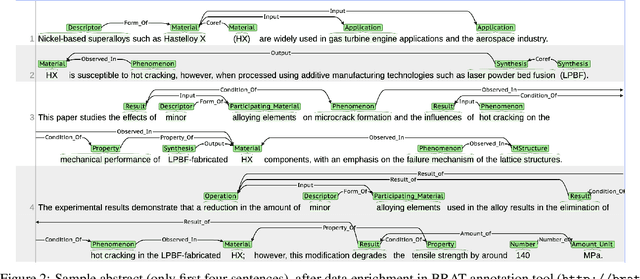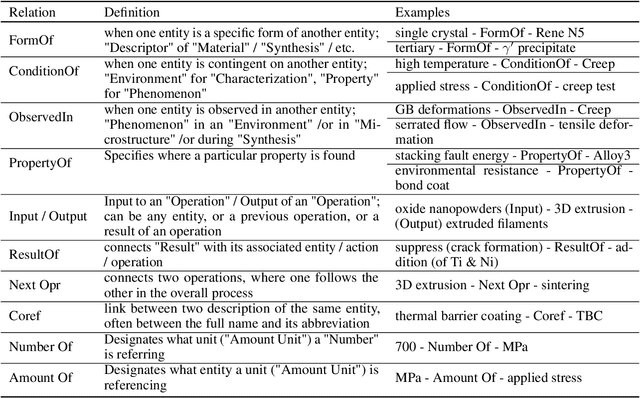Zhisong Zhang
Explore to Evolve: Scaling Evolved Aggregation Logic via Proactive Online Exploration for Deep Research Agents
Oct 16, 2025Abstract:Deep research web agents not only retrieve information from diverse sources such as web environments, files, and multimodal inputs, but more importantly, they need to rigorously analyze and aggregate knowledge for insightful research. However, existing open-source deep research agents predominantly focus on enhancing information-seeking capabilities of web agents to locate specific information, while overlooking the essential need for information aggregation, which would limit their ability to support in-depth research. We propose an Explore to Evolve paradigm to scalably construct verifiable training data for web agents. Begins with proactive online exploration, an agent sources grounded information by exploring the real web. Using the collected evidence, the agent then self-evolves an aggregation program by selecting, composing, and refining operations from 12 high-level logical types to synthesize a verifiable QA pair. This evolution from high-level guidance to concrete operations allowed us to scalably produce WebAggregatorQA, a dataset of 10K samples across 50K websites and 11 domains. Based on an open-source agent framework, SmolAgents, we collect supervised fine-tuning trajectories to develop a series of foundation models, WebAggregator. WebAggregator-8B matches the performance of GPT-4.1, while the 32B variant surpasses GPT-4.1 by more than 10% on GAIA-text and closely approaches Claude-3.7-sonnet. Moreover, given the limited availability of benchmarks that evaluate web agents' information aggregation abilities, we construct a human-annotated evaluation split of WebAggregatorQA as a challenging test set. On this benchmark, Claude-3.7-sonnet only achieves 28%, and GPT-4.1 scores 25.8%. Even when agents manage to retrieve all references, they still struggle on WebAggregatorQA, highlighting the need to strengthen the information aggregation capabilities of web agent foundations.
UniGist: Towards General and Hardware-aligned Sequence-level Long Context Compression
Sep 19, 2025Abstract:Large language models are increasingly capable of handling long-context inputs, but the memory overhead of key-value (KV) cache remains a major bottleneck for general-purpose deployment. While various compression strategies have been explored, sequence-level compression, which drops the full KV caches for certain tokens, is particularly challenging as it can lead to the loss of important contextual information. To address this, we introduce UniGist, a sequence-level long-context compression framework that efficiently preserves context information by replacing raw tokens with special compression tokens (gists) in a fine-grained manner. We adopt a chunk-free training strategy and design an efficient kernel with a gist shift trick, enabling optimized GPU training. Our scheme also supports flexible inference by allowing the actual removal of compressed tokens, resulting in real-time memory savings. Experiments across multiple long-context tasks demonstrate that UniGist significantly improves compression quality, with especially strong performance in detail-recalling tasks and long-range dependency modeling.
InComeS: Integrating Compression and Selection Mechanisms into LLMs for Efficient Model Editing
May 28, 2025Abstract:Although existing model editing methods perform well in recalling exact edit facts, they often struggle in complex scenarios that require deeper semantic understanding rather than mere knowledge regurgitation. Leveraging the strong contextual reasoning abilities of large language models (LLMs), in-context learning (ICL) becomes a promising editing method by comprehending edit information through context encoding. However, this method is constrained by the limited context window of LLMs, leading to degraded performance and efficiency as the number of edits increases. To overcome this limitation, we propose InComeS, a flexible framework that enhances LLMs' ability to process editing contexts through explicit compression and selection mechanisms. Specifically, InComeS compresses each editing context into the key-value (KV) cache of a special gist token, enabling efficient handling of multiple edits without being restricted by the model's context window. Furthermore, specialized cross-attention modules are added to dynamically select the most relevant information from the gist pools, enabling adaptive and effective utilization of edit information. We conduct experiments on diverse model editing benchmarks with various editing formats, and the results demonstrate the effectiveness and efficiency of our method.
VScan: Rethinking Visual Token Reduction for Efficient Large Vision-Language Models
May 28, 2025Abstract:Recent Large Vision-Language Models (LVLMs) have advanced multi-modal understanding by incorporating finer-grained visual perception and encoding. However, such methods incur significant computational costs due to longer visual token sequences, posing challenges for real-time deployment. To mitigate this, prior studies have explored pruning unimportant visual tokens either at the output layer of the visual encoder or at the early layers of the language model. In this work, we revisit these design choices and reassess their effectiveness through comprehensive empirical studies of how visual tokens are processed throughout the visual encoding and language decoding stages. Guided by these insights, we propose VScan, a two-stage visual token reduction framework that addresses token redundancy by: (1) integrating complementary global and local scans with token merging during visual encoding, and (2) introducing pruning at intermediate layers of the language model. Extensive experimental results across four LVLMs validate the effectiveness of VScan in accelerating inference and demonstrate its superior performance over current state-of-the-arts on sixteen benchmarks. Notably, when applied to LLaVA-NeXT-7B, VScan achieves a 2.91$\times$ speedup in prefilling and a 10$\times$ reduction in FLOPs, while retaining 95.4% of the original performance.
WebCoT: Enhancing Web Agent Reasoning by Reconstructing Chain-of-Thought in Reflection, Branching, and Rollback
May 26, 2025Abstract:Web agents powered by Large Language Models (LLMs) show promise for next-generation AI, but their limited reasoning in uncertain, dynamic web environments hinders robust deployment. In this paper, we identify key reasoning skills essential for effective web agents, i.e., reflection & lookahead, branching, and rollback, and curate trajectory data that exemplifies these abilities by reconstructing the agent's (inference-time) reasoning algorithms into chain-of-thought rationales. We conduct experiments in the agent self-improving benchmark, OpenWebVoyager, and demonstrate that distilling salient reasoning patterns into the backbone LLM via simple fine-tuning can substantially enhance its performance. Our approach yields significant improvements across multiple benchmarks, including WebVoyager, Mind2web-live, and SimpleQA (web search), highlighting the potential of targeted reasoning skill enhancement for web agents.
UNCLE: Uncertainty Expressions in Long-Form Generation
May 22, 2025Abstract:Large Language Models (LLMs) are prone to hallucination, particularly in long-form generations. A promising direction to mitigate hallucination is to teach LLMs to express uncertainty explicitly when they lack sufficient knowledge. However, existing work lacks direct and fair evaluation of LLMs' ability to express uncertainty effectively in long-form generation. To address this gap, we first introduce UNCLE, a benchmark designed to evaluate uncertainty expression in both long- and short-form question answering (QA). UNCLE spans five domains and comprises 4k long-form QA instances and over 20k short-form QA pairs. Our dataset is the first to directly bridge short- and long-form QA with paired questions and gold-standard answers. Along with the benchmark, we propose a suite of new metrics to assess the models' capabilities to selectively express uncertainty. Using UNCLE, we then demonstrate that current models fail to convey uncertainty appropriately in long-form generation. We further explore both prompt-based and training-based methods to improve models' performance, with the training-based methods yielding greater gains. Further analysis of alignment gaps between short- and long-form uncertainty expression highlights promising directions for future research using UNCLE.
Recall with Reasoning: Chain-of-Thought Distillation for Mamba's Long-Context Memory and Extrapolation
May 06, 2025Abstract:Mamba's theoretical infinite-context potential is limited in practice when sequences far exceed training lengths. This work explores unlocking Mamba's long-context memory ability by a simple-yet-effective method, Recall with Reasoning (RwR), by distilling chain-of-thought (CoT) summarization from a teacher model. Specifically, RwR prepends these summarization as CoT prompts during fine-tuning, teaching Mamba to actively recall and reason over long contexts. Experiments on LONGMEMEVAL and HELMET show RwR boosts Mamba's long-context performance against comparable Transformer/hybrid baselines under similar pretraining conditions, while preserving short-context capabilities, all without architectural changes.
WebEvolver: Enhancing Web Agent Self-Improvement with Coevolving World Model
Apr 23, 2025Abstract:Agent self-improvement, where the backbone Large Language Model (LLM) of the agent are trained on trajectories sampled autonomously based on their own policies, has emerged as a promising approach for enhancing performance. Recent advancements, particularly in web environments, face a critical limitation: their performance will reach a stagnation point during autonomous learning cycles, hindering further improvement. We argue that this stems from limited exploration of the web environment and insufficient exploitation of pre-trained web knowledge in LLMs. To improve the performance of self-improvement, we propose a novel framework that introduces a co-evolving World Model LLM. This world model predicts the next observation based on the current observation and action within the web environment. Leveraging LLMs' pretrained knowledge of abundant web content, the World Model serves dual roles: (1) as a virtual web server generating self-instructed training data to continuously refine the agent's policy, and (2) as an imagination engine during inference, enabling look-ahead simulation to guide action selection for the agent LLM. Experiments in real-world web environments (Mind2Web-Live, WebVoyager, and GAIA-web) show a 10% performance gain over existing self-evolving agents, demonstrating the efficacy and generalizability of our approach, without using any distillation from more powerful close-sourced models. Our work establishes the necessity of integrating world models into autonomous agent frameworks to unlock sustained adaptability.
Enhancing Web Agents with Explicit Rollback Mechanisms
Apr 16, 2025Abstract:With recent advancements in large language models, web agents have been greatly improved. However, dealing with complex and dynamic web environments requires more advanced planning and search abilities. Previous studies usually adopt a greedy one-way search strategy, which may struggle to recover from erroneous states. In this work, we enhance web agents with an explicit rollback mechanism, enabling the agent to revert back to a previous state in its navigation trajectory. This mechanism gives the model the flexibility to directly control the search process, leading to an effective and efficient web navigation method. We conduct experiments on two live web navigation benchmarks with zero-shot and fine-tuning settings. The results demonstrate the effectiveness of our proposed approach.
Structured Extraction of Process Structure Properties Relationships in Materials Science
Apr 04, 2025



Abstract:With the advent of large language models (LLMs), the vast unstructured text within millions of academic papers is increasingly accessible for materials discovery, although significant challenges remain. While LLMs offer promising few- and zero-shot learning capabilities, particularly valuable in the materials domain where expert annotations are scarce, general-purpose LLMs often fail to address key materials-specific queries without further adaptation. To bridge this gap, fine-tuning LLMs on human-labeled data is essential for effective structured knowledge extraction. In this study, we introduce a novel annotation schema designed to extract generic process-structure-properties relationships from scientific literature. We demonstrate the utility of this approach using a dataset of 128 abstracts, with annotations drawn from two distinct domains: high-temperature materials (Domain I) and uncertainty quantification in simulating materials microstructure (Domain II). Initially, we developed a conditional random field (CRF) model based on MatBERT, a domain-specific BERT variant, and evaluated its performance on Domain I. Subsequently, we compared this model with a fine-tuned LLM (GPT-4o from OpenAI) under identical conditions. Our results indicate that fine-tuning LLMs can significantly improve entity extraction performance over the BERT-CRF baseline on Domain I. However, when additional examples from Domain II were incorporated, the performance of the BERT-CRF model became comparable to that of the GPT-4o model. These findings underscore the potential of our schema for structured knowledge extraction and highlight the complementary strengths of both modeling approaches.
 Add to Chrome
Add to Chrome Add to Firefox
Add to Firefox Add to Edge
Add to Edge